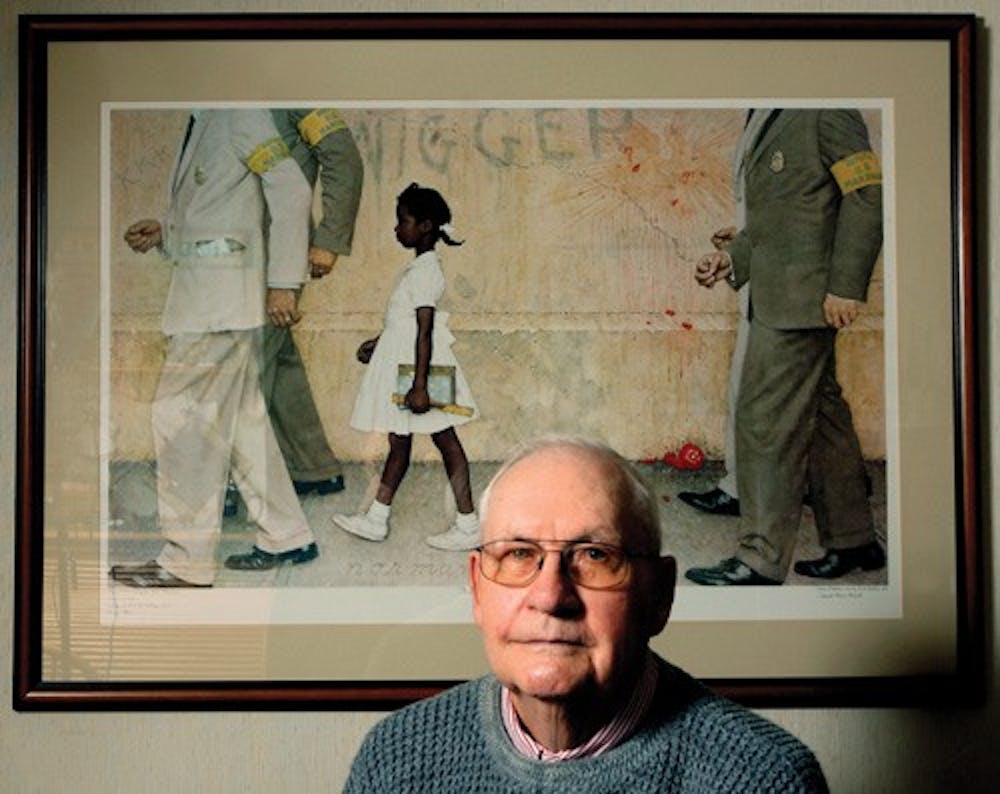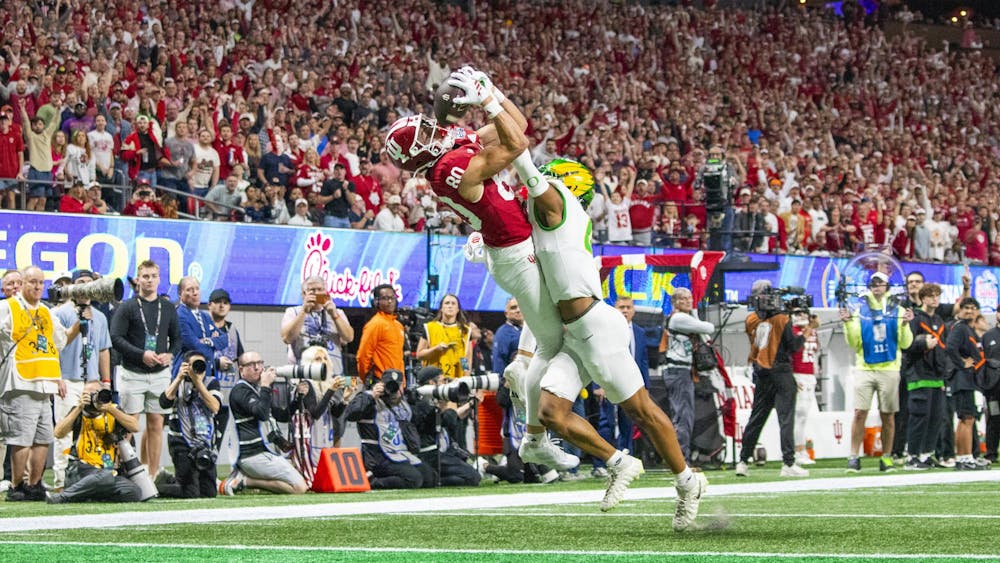LOGANSPORT, Ind. – It’s an image that came to symbolize the civil rights movement of the 1960s – a Norman Rockwell painting of a small black girl being escorted to school by U.S. Marshals.\nOne of the U.S. Marshals depicted in that painting is Logansport native Charles Burks, 85, who took part in more than a dozen school integrations.\nIn 1960, Burks was a deputy marshal working at the Hammond, Ind., office and a member of a Special Operations Group trained to deal with the integration of schools.\nThe little girl immortalized in Rockwell’s painting, Ruby Bridges, now graces a new permanent exhibit at the Children’s Museum of Indianapolis, “The Power of Children.”\n“They called me one afternoon, I was in court up in Hammond with prisoners,” Burks recalled from his Logansport home. “Washington called me and told me to be in New Orleans tomorrow. There were about 20 of us there.”\nBurks said he figured there would be some violence when Bridges entered the school on the first day, which is why the Special Operations Group was dispatched to the Crescent City.\n“The first day, we went to her house and drove her to school,” Burks recalled. “We stayed in the school all day. There were four of us that stayed in the school.”\nWhen they arrived at the school, there was a large group of demonstrators gathered, yelling and throwing tomatoes and eggs.\n“It must have scared her to death. She didn’t act like it,” he said. “She never showed any signs of being afraid; she was a brave little girl. Either that or (she) didn’t realize what was going on.”\nBurks said he knew what was going on, but he also knew what to do about it. \n“We walked in like nothing was happening. That kind of threw the crowd off,” he said. “We didn’t want to look at them or say anything to them. You just ignored them.”\nBurks said at the end of the school day, they would escort Bridges back to the car and drive her home. He said local police protected the family home.\n“We knew it was a history-making event,” he explained. “We were in the court when the order was issued for her to attend school there.”\nEventually Bridges started talking to the Marshals on the daily trip to the school, and the Marshals would ask her how school was.\n“We got there in October and stayed through Christmas,” Burks said of his time in New Orleans. “When Christmas vacation time came, they decided to change and sent us home.”\nYears later, Burks was assigned to the U.S. Marshals office in New Orleans.\n“When I became Marshal down there, one of the deputies said ‘You don’t remember me, but I was one of those guys throwing eggs and rocks at you,’” he said.\nBurks also took part in the integration of the University of Mississippi and at universities in Georgia and Alabama.\n“When we were at Ole Miss, the police were worse than the rioters,” he said.\nBurks’ wife of 62 years, Betty, said she worried every time he left.\n“I went to work and tried to listen to the news,” she said. “When he was in Mississippi, I was attending a party at a doctor’s house. When I heard what was happening in Oxford, I rushed home.”\nBurks said honoring Bridges is a great thing to do.\n“It was the right thing to do,” he said of his service in the South.\n-Courtesy of the Kokomo Tribune
Famous integration painting in Indianapolis

Get stories like this in your inbox
Subscribe





